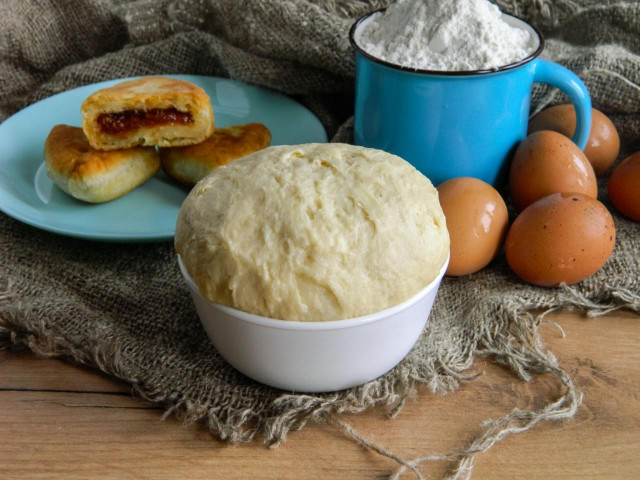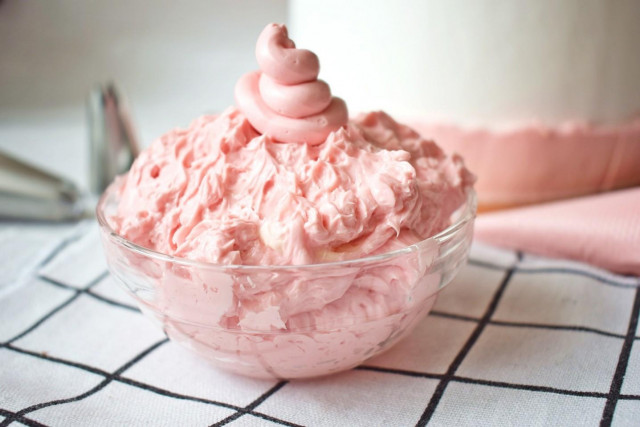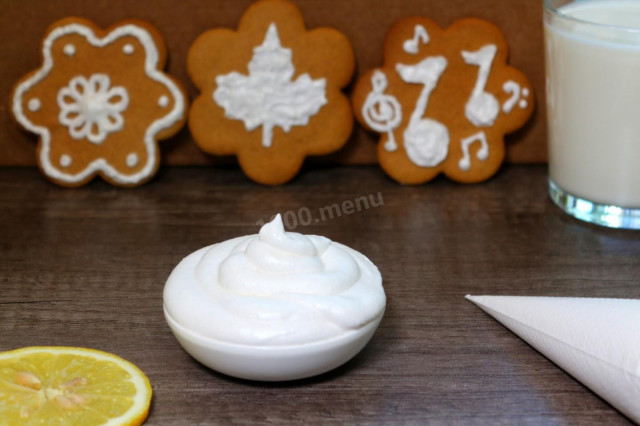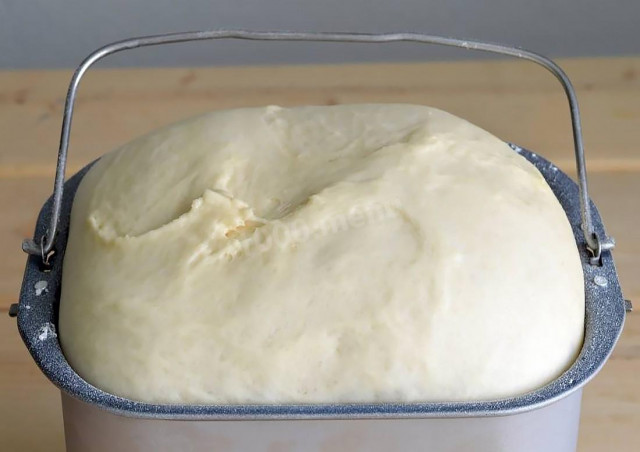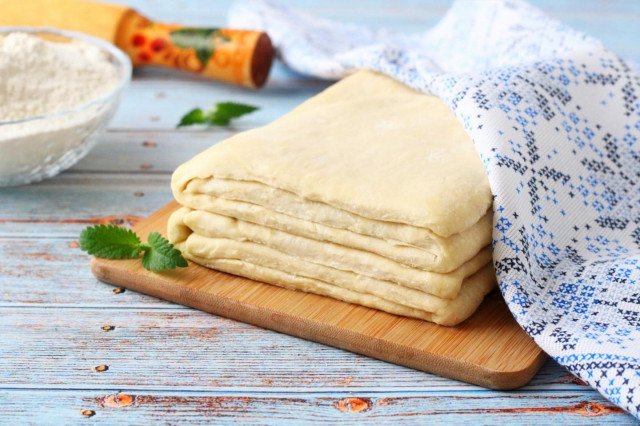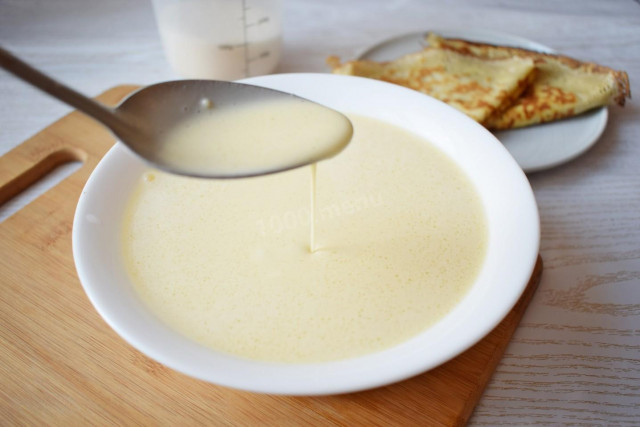Composition / ingredients
Step-by-step cooking
Step 1:
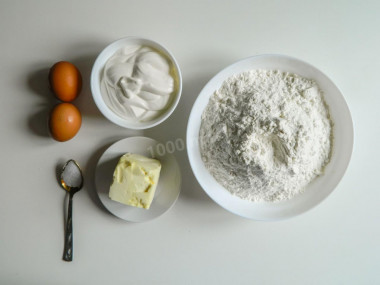
How to make dough on sour cream? Prepare all the necessary ingredients. Take the flour of the highest grade. Take sour cream with a fat content of 15-20%. Remove sour cream and eggs from the refrigerator 1-1.5 hours before cooking. To make the dough more successful, they must be at room temperature.
Step 2:
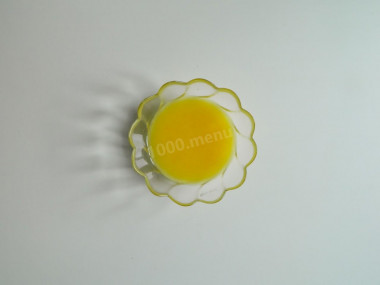
Melt the butter and leave to cool.
Step 3:
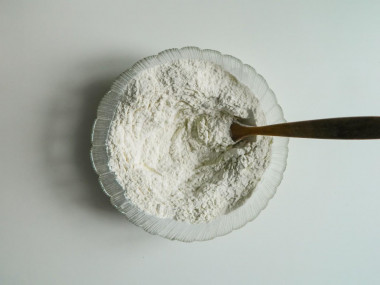
To knead the dough, take a deep bowl in which it will be convenient to mix dry and liquid ingredients. Sift half of the flour indicated in the recipe to sift out small debris and the dough is saturated with oxygen. Make a recess in the flour.
Step 4:
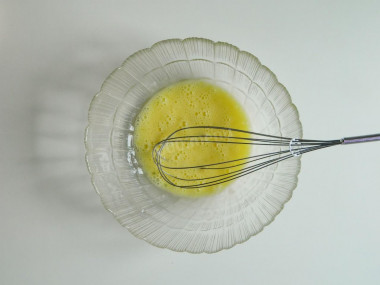
Wash the eggs with soap, dry with a towel or napkin. Take a deep bowl in which it will be convenient to beat eggs. Whisk them with sugar or salt. It is not necessary to beat until the foam appears.
Step 5:
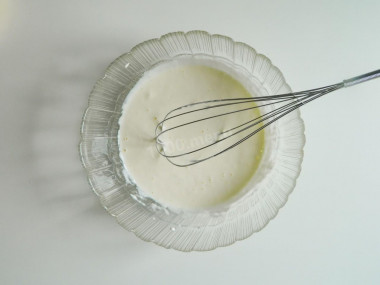
Add sour cream to the beaten eggs and mix well.
Step 6:
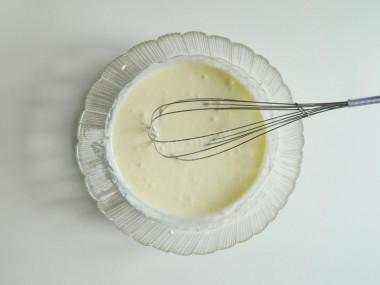
Add the melted butter and mix until smooth.
Step 7:
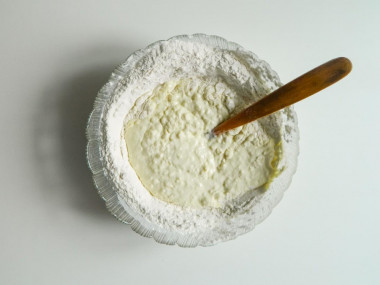
To make the dough successful, you need to add liquid to dry, and not vice versa. Pour the liquid component into the recess in the flour. Gently knead the dough, touching only the liquid and not adding flour. Thus, the flour will be gradually added and the dough will become homogeneous. It is important to add flour little by little until you get the right consistency.
Step 8:
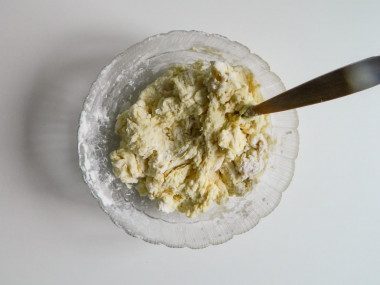
When it becomes difficult to knead with a spoon, start doing it with your hands. Knead the dough thoroughly.
Step 9:

The dough should be very tender. Knead the dough and leave it to rest so that the gluten is well dispersed. During this time, you can prepare the filling. From the specified number of products, approximately 700 grams of ready-made dough is obtained. Since the dough is quite tender, when rolling it can stick to the rolling pin and the table, take this into account and sprinkle them with flour. This dough tastes a bit like an airy puff pastry.
Butter can be melted in the microwave in the appropriate mode (read the instructions for your device) or in a water bath. How to melt butter in a water bath? You will need two containers of different diameters. Pour water into a large one and put it on the stove. Place the smaller container on top so that it is submerged in water by about half. Put the sliced butter into it. Under the influence of boiling water, the oil will begin to melt. Stir the oil slightly to speed up the process. As soon as the pieces of oil are completely dissolved, remove the container from the stove.
Make it a rule that the amount of flour is never determined in advance when preparing flour and bread products! This indicator will always fluctuate, since flour can be of different humidity, differ in the degree of grinding and the level of gluten, and other indicators, which inevitably affects its ability to bind to the liquid mixture in the dough. Since it is impossible to do a laboratory test at home to determine all the parameters and indicators of flour, we recommend acting on the principle of "flour in water", that is, take liquids exactly according to the recipe, and add flour to the liquid component not all at once, but in parts, achieving the desired consistency (while flour may take a little more or on the contrary, less than in the recipe). Thanks to this technique, the proportions of the ingredients are more accurately preserved and the quality of the dough is not lost.
Caloric content of the products possible in the composition of the dish
- Sour cream with 30% fat content - 340 kcal/100g
- Sour cream of 25% fat content - 284 kcal/100g
- Sour cream with 20% fat content - 210 kcal/100g
- Sour cream of 10% fat content - 115 kcal/100g
- Sour cream - 210 kcal/100g
- Granulated sugar - 398 kcal/100g
- Sugar - 398 kcal/100g
- Butter 82% - 734 kcal/100g
- Amateur unsalted butter - 709 kcal/100g
- Unsalted peasant butter - 661 kcal/100g
- Peasant salted butter - 652 kcal/100g
- Melted butter - 869 kcal/100g
- Salt - 0 kcal/100g
- Wheat flour - 325 kcal/100g
- Baking soda - 0 kcal/100g
- Chicken egg - 80 kcal/100g

